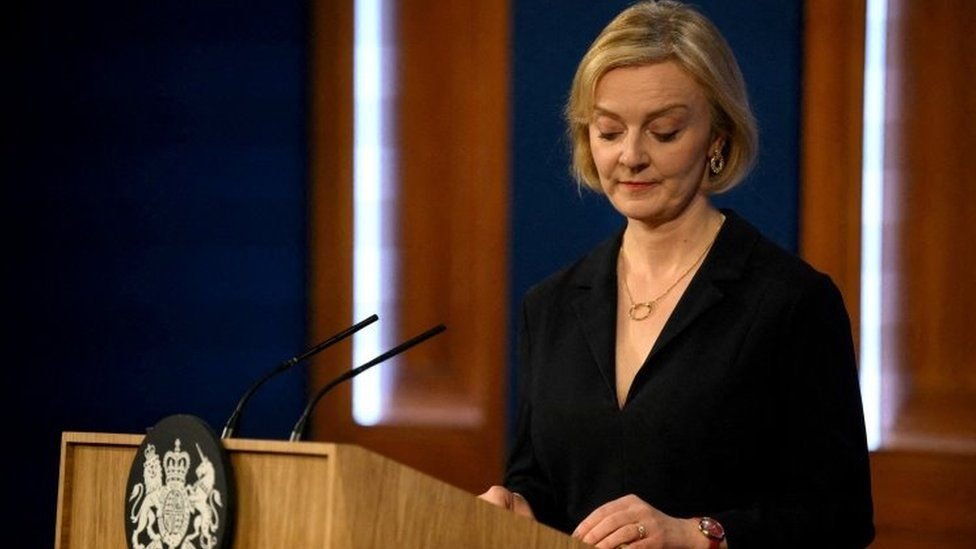Why the UK Gilts Market is like the Schleswig–Holstein question
"Only three people have ever really understood the Schleswig-Holstein business – the Prince Consort, who is dead – a German professor, who has gone mad – and I, who have forgotten all about it." Lord Palmerston, British Prime Minister 1859-65
The machinations of the various Danish duchies, their relationship to the burgeoning German Confederation and wider nineteenth century European power politics was famously obtuse; no one beyond the three mentioned by Palmerston ever understood it.
The Schleswig-Holstein question has become synonymous with a situation too complex to understand. Which is an oblique lead into my main topic today; what on earth happened to the UK economy at the start of October?
We all know the story. On September 23rd the short-lived Truss government announced several tax cuts and increases in expenditure but neglected to explain how to pay for them. The markets went crazy, and the interest on British government borrowing (gilts) rose exponentially. The Bank of England stepped in to reassure the markets by announcing they would authorise up to £65B of gilt purchases over the next two weeks to stabilise the cost of British government debt.
Then the story kind of went away as other stuff intervened to entertain the media. There were background noises about Quantitive Tightening, pivots, and something Schleswig–Holstein ish about UK pension funds but, it was complicated and so not part of any mainstream narrative.
So, I decided to do a little research as I’m intrigued by the story behind the narrative. I’m going to use a list format below as the story is somewhat complicated, but I’ll try to simplify.
1) Pension funds take money in from members. They invest this money and, as pensions become due, they hope that the income from the investments will be sufficient to pay for those pensions. (1)
2) This is the ‘matching assets’ process where projected money out is matched by future revenue streams.
3) Obviously as we’re dealing with many variables and long periods of time, complicated assumptions are made by pension companies to ensure they have the funds to meet their pension obligations. A range of investment options are used (equities, cash in hand, government and private bonds, property investment and a type of derivative known as (LDIs – Liability Driven Investments).
4) Sorry Tim. You lost me on that last one. LDIs?
5) LDI’s are basically a hedge. As pension fund projections of income are heavily dependant on interest rates, the pension funds take out what is effectively an insurance policy against interest rate movements. The collateral for the hedge is often government gilts. If the value of these gilts goes down, more are needed (a margin call).
6) When interest rates go down – which could adversely affect a pension company’s revenue stream, the policy kicks in and provides funds to smooth the pension company’s revenue.
7) When interest rates go up – which should in theory be a good thing as more income will come in – the pension funds however need to pay the insurer (I want to use the word counterparty here, but it tends to confuse rather than illuminate). (2)
8) So, when in September / October the interest rates on UK government gilts dramatically shot up and the underlying value went down, UK pension funds found that their collateral was worth less and that they were suddenly liable to pay their counter-parties lots of money.
9) This forced pension companies to make fire sales of liquid assets – for example, UK Government gilts.
10) But, at the same time two other things were happening:
a. The Bank of England had finally started to unwind its balance sheet of the government gilts it had on its balance sheet (£450B of QE for COVID expenditure for example).
b. The UK government’s mini budget promised a lot of spend, less government income because of tax cuts and no plan how this was going to paid for. The assumption is that they would have to borrow more by issuing more gilts to finance the new commitments.
11) So, we have pension funds and the BoE both dumping UK Government gilts at the same time as the UK Government wanted to issue more.
12) Too many gilts. Not enough buyers. The UK state simultaneously selling off and issuing more gilts. Supply increased, the value went down, the interest rates went up. A doom loop crisis! (3)
13) Bank of England steps in and reverses itself in a week and goes from Quantitive Tightening (i.e., selling gilts and tightening the money to supply) to Quantitive Easing to prop up the bond market and protect the pension companies from going bust.
Are we all clear now? Yes, the proximate cause of the issue was the government being opaque about financing of their fiscal plans. But behind the scenes we had a derivative driven pension market (shades of 2008’s crash perhaps) and a Bank of England both restricting and then growing the money supply and being forced to do so by an unwelcome cash-call in the pensions market.
What is the takeaway?
- Governments need to publish their spending & borrowing plans at the same time. As they are subject to the markets themselves, they need to convince the markets of their plans.
- QE and loosening the money supply has long term effects. Interest rates have been so low for so long, LDI’s offered a (it seemed) low-cost way of hedging this whilst freeing up cash to invest in riskier assets with greater returns.
Extraordinary monetary policy should remain just that – only to be used in a crisis and not as an expedient to meet the spending plans of governments who won’t raise finance in more normal ways (tax, borrowing, spending cuts, efficiencies).
- Complex financial instruments can obscure risk. Until a risk happens. And then they unravel. Regulators need to be stress testing institutions more regularly and with greater supervision. Although the market movements following the 23rd Sept were large, they were not implausible and so needed to be stress tested
And - I hear you ask - what happened to the Schleswig–Holstein regions of Denmark and Germany in the end? Wars happened. The question of who owned the duchies was finally resolved by the macro forces of war and of peace treaties and, sometimes, plebiscites. The complexities resolved themselves by blunt instruments and rough solutions.
Is this how the gilts, QE & pensions markets will work out with market forces playing the role of war?
Notes
1) Historically the UK had Defined Benefit pensions organised through employers. What this meant was that employees put money into a pot during their working life and the company guaranteed that when the employee retired, they would get x% of their final salary. Therefore, the company & the pension fund employed to manage the funds have to always make sure the fund is adequate to meet obligations. This is the type of pension fund affected by the recent chaos in the UK gilt market.
As Defined Benefit pension funds are expensive and complicated to maintain, the UK has gradually been moving towards Defined Contribution pension schemes in the last twenty years. Here, employees and employers both contribute towards a pension fund with a pensions company. The pensions payable to the employees when they retire are based on the fund performance in future – i.e., the future benefit is not guaranteed.
2) “To mitigate the risk, of the bank counterparty defaulting on its payments when the contract matures, the bank would post additional collateral as surety against the contract. Typically collateral is posted by whichever party is ‘out of the money’. It is considered good practice and is becoming standard market practice to minimise risk by posting only cash or high-quality government bonds as collateral” An Introduction to Liability based investment. Can you see the last sentence? This is what happened in the UK Sept / Oct.
3) Like all equities, government bonds follow the same rules; the yield (interest payable) has an inverse relationship to the value. A doom loop happens when – in order to generate cash – institutions are forced to sell their assets thereby lowering the price of those assets. This lowering price degrades their existing assets making them sell more. Lowering the price again.


